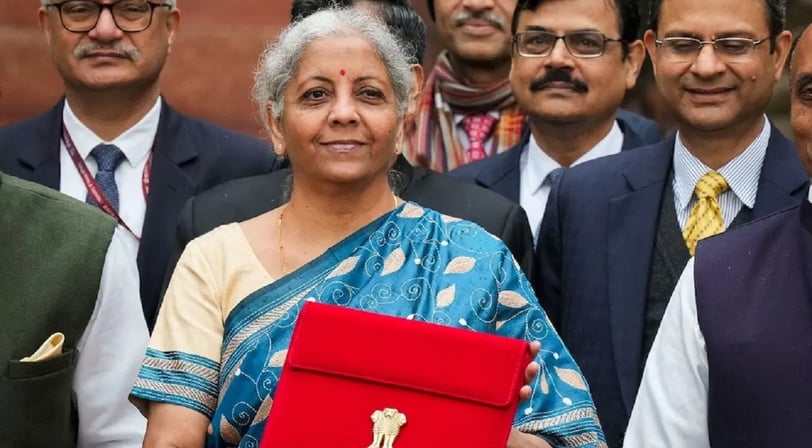Add your promotional text...
Budget 2024: India’s Plan to Ease Tax Burdens for the Middle Class and Revive Economic Growth
Synopsis: India is considering significant income tax cuts for middle-class taxpayers earning up to ₹1.5 million annually, aiming to boost consumption amid an economic slowdown. This move could transform the financial landscape for millions while also stimulating the economy.
VIEWS ON NEWS
By Monika Agarwal
12/26/20243 min read


The Indian government is reportedly considering a pivotal policy shift in its upcoming February budget—a reduction in income taxes for individuals earning up to 1.5 million rupees ($17,590) annually. This initiative, designed to ease the economic strain on the middle class, holds potential to stimulate domestic consumption as the nation navigates a decelerating economic landscape.
According to two government officials privy to the discussions, this proposed tax relief aims to address the financial challenges faced by urban taxpayers, who continue to grapple with the soaring cost of living. While the specifics remain under deliberation, the changes would be applicable exclusively to those who have opted for the 2020 tax regime. This system notably discards traditional exemptions, including those for housing rentals, in favor of a streamlined structure with lower rates.
A Closer Look at the 2020 Tax Regime
Under the 2020 framework, incomes ranging from 300,000 to 1.5 million rupees are taxed at progressive rates between 5% and 20%. Earnings above this threshold attract a 30% tax rate. Taxpayers, however, retain the option to choose between this simplified scheme and the older regime, which offers deductions for housing and insurance but levies slightly higher rates.
The introduction of reduced rates could encourage a broader adoption of the newer system, simplifying compliance for taxpayers and potentially increasing overall revenue efficiency. A senior official highlighted that the precise scale of these tax adjustments remains under review, with final decisions expected as the budget announcement on February 1 approaches.
Potential Economic Impact
The proposed tax cuts are likely to resonate across India’s urban middle class, a demographic disproportionately affected by stagnant wage growth and inflationary pressures. High food prices have dampened demand across various sectors, ranging from consumer goods to automobiles. By placing more disposable income in the hands of consumers, the government hopes to invigorate spending and counteract the economic slowdown.
India, the world’s fifth-largest economy, has been experiencing its slowest growth in seven quarters, with Gross Domestic Product (GDP) expansion waning between July and September. Policymakers are under mounting pressure to implement measures that could reverse this trend and stimulate growth. A reduction in income tax rates could serve as a catalyst, enhancing purchasing power while addressing longstanding grievances from the middle-class voter base.
Political and Revenue Considerations
The proposed tax relief also carries significant political undertones. With mounting dissatisfaction over high taxes and stagnant wages, the middle class has voiced its concerns more assertively in recent years. A well-timed fiscal intervention could bolster the government’s standing ahead of upcoming elections while demonstrating a commitment to addressing public concerns.
However, the initiative is not without fiscal risks. Income taxes constitute a significant share of government revenue, particularly contributions from the highest earners. Individuals with annual incomes exceeding 10 million rupees account for the bulk of tax collections, given their 30% tax rate. While the anticipated revenue loss from middle-class tax cuts has yet to be quantified, one official suggested that the adoption of a simpler tax framework could offset some losses by expanding the taxpayer base.
Broader Implications for Tax Policy
India’s evolving tax landscape reflects a broader global trend towards simplification and taxpayer-centric reforms. As policymakers balance revenue generation with equitable burden-sharing, the potential shift underscores the government’s recognition of the pivotal role played by the middle class in driving economic growth. If implemented effectively, the move could not only address immediate financial challenges but also lay the groundwork for a more resilient and inclusive fiscal framework.
What’s Next?
As the February budget date approaches, all eyes are on the finance ministry to unveil measures that could redefine the economic narrative. Whether the proposed tax cuts will materialize, and to what extent, remains to be seen. For now, the prospect of middle-class relief offers a glimmer of hope amid challenging times.
